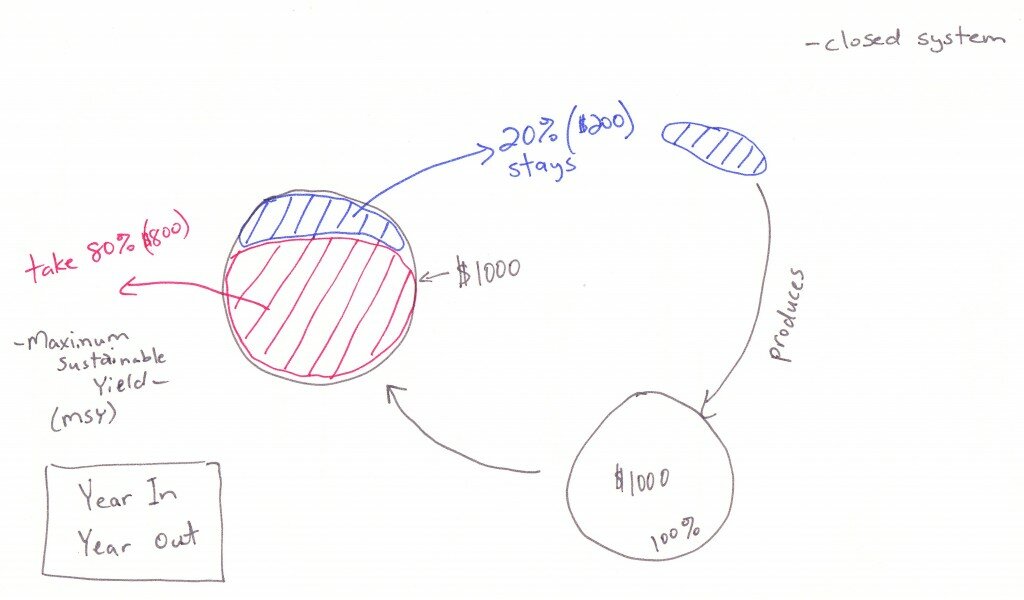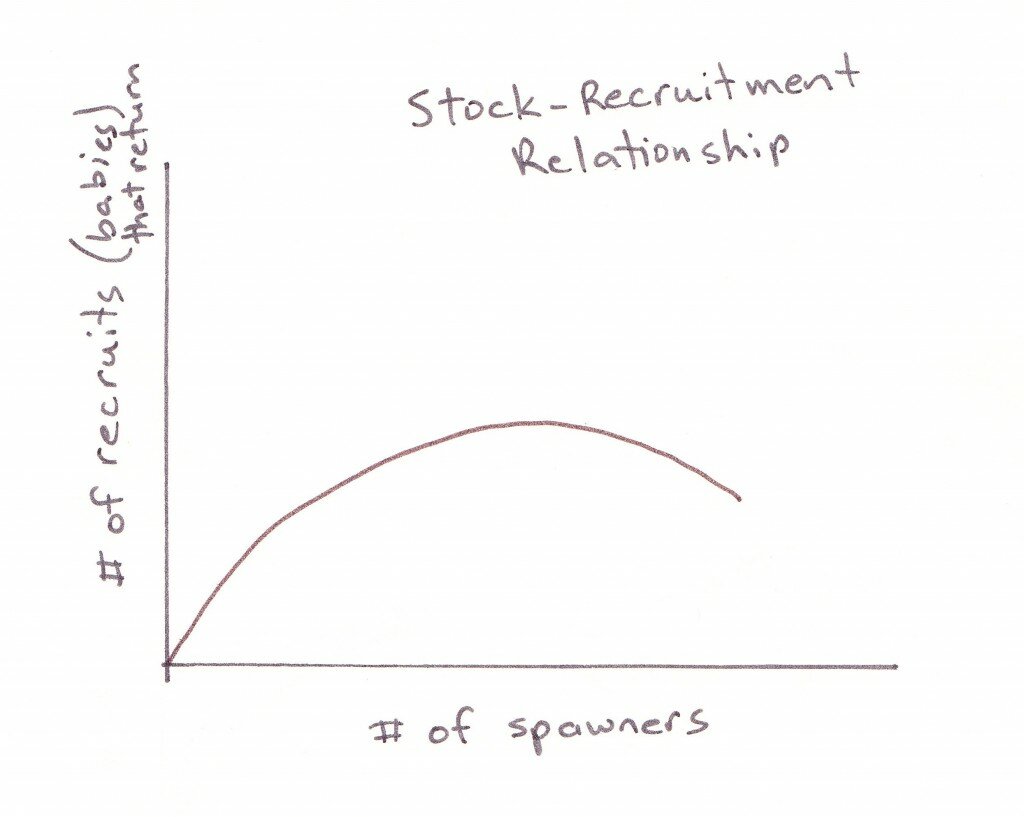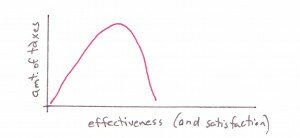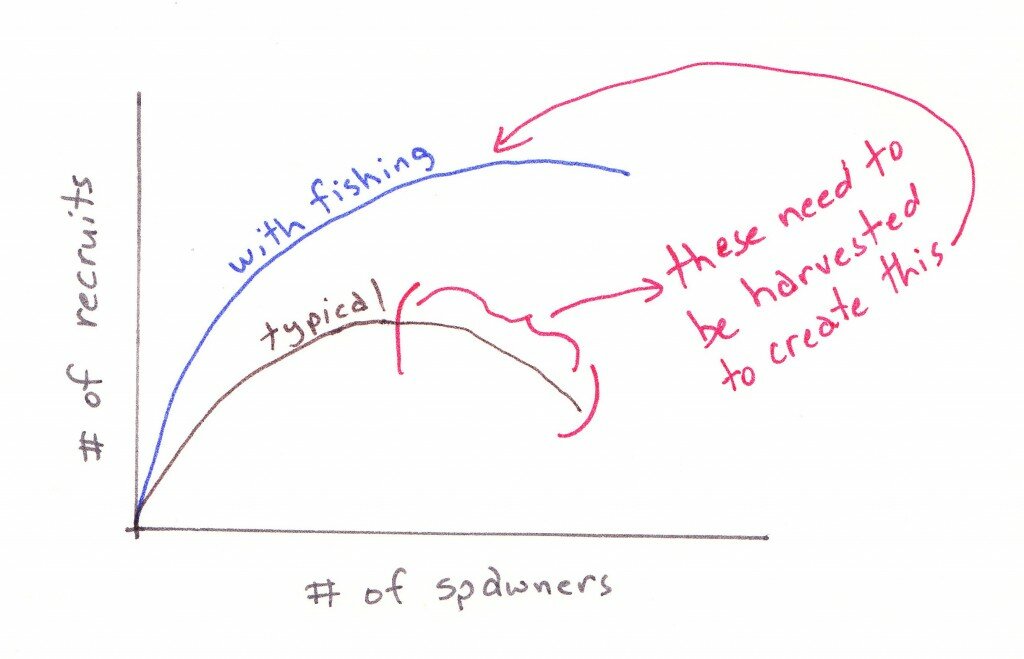
do you know the story of Cerberus the mythical three-headed dog that guarded the gates to Hades?
.
Shhhh… nobody tell the “Harper”- Reform government that maybe they are misplacing energy, time and resources barking up the wrong tree..
And… maybe opening a real can of worms that some folks flapping their Right wings may not want opened… (not mentioning any – Fraser Institute – names…)
Or… is this ruse to bark up the enviro-terrorist tree simply an effective ploy to keep us all:
Hush, Hush
…about the huge increase in PetroChina (Chinese government owned corporation) multi-BILLION dollar investments and direct purchases of Canada tar sands projects, and natural gas, and… and… and…
_ _ _ _ _ _ _
Coming from the National Post newspaper:
The Conservative government will keep a closer eye on environment-focused charities accused of breaking rules that cap their political activity, cracking down on groups that allegedly engage in politically charged work beyond the legal limit.
Thursday’s budget arms the Canada Revenue Agency with $8-million over two years to ensure charities devote their resources to charitable work and to improve transparency by asking them to disclose the extent to which their political activities are funded by foreign sources.
“[Some charities] are not acting like they’re a charitable institution; they’re acting like they’re an environmental lobbyist — that’s the big objection,” said [Professor] Frank Atkins, a University of Calgary economist. “They’re hiding behind their charitable status.”
The revenue agency says a charity is allowed to devote up to 10% of its total annual resources to political activities, but Finance Minister Jim Flaherty said this week the government has received “a lot” of complaints from Canadians who worry their donations are going toward political action rather than charity work.
“There is clearly a need, in our view, for more vigilance,” Mr. Flaherty said.
…
The question of foreign money being used to affect Canadian policy is chief among the government’s concerns, Prof. Atkins [at University of Calgary] said.
“What’s happening out here is that whenever there’s a regulatory approval process, it gets loaded up with all these obscure groups seemingly out of nowhere,” he said, referring to “deep-pocketed foundations in the United States” challenging oil-sands development and the pipeline project. “Even those using Canadian money are still not acting like a charitable institution.”
_ _ _ _ _ _ _ _
Hmmmm… is that the same Professor Frank Atkins that is listed on the website as:
Frank’s main academic areas of interest are monetary policy and the application of time series analysis to macroeconomic data. Frank had the privilege of supervising the Master of Arts (Economics) thesis of Stephen Harper, who is now the Prime Minister of Canada.
_ _ _ _ _ _ _ _
Well… geee… National Post reporter that sounds like some credible, un-biased ‘sources’…?
Seems the Fraser Institute got quoted twice in this article… as the article finishes with:
Niels Veldhuis, a Fraser Institute vice-president, said there is no question the federal government believes some environmental groups are not abiding by the rules.
“The government ought to look into that,” he said.
_ _ _ _ _ _ _ _
Right… this is the same Niels Veldhuis who thinks that Stats Canada numbers are wrong on many Canadians ability to meet basic needs:
as of 2005, only 4.7 per cent of the Canadian population did not have enough income to meet basic needs
(Stats Can suggests its almost twice that…)
_ _ _ _ _ _ _ _
Oh wait… is that also the same University of Calgary that has various “Research Chair” positions in its Faculty of Medicine sponsored by the likes of Enbridge, Husky Energy, and no shortage of either pharmaceutical companies or other corporations?
For example:
AstraZeneca Chair in Cardiovascular Health Promotion and Disease Prevention
Who’s ? Well, they’re a “global biopharmaceutical company…”
Or, the GSK Professorship in Inflammatory Lung Disease — what’s GSK?
Oh that’s just
“GlaxoSmithKline is one of the largest research and development (R&D) investors in the industry, collaborating with academic institutions, governments and other pharmaceutical and biotechnology companies to help people live healthier lives.”
Or, the Novartis Chair in Schizophrenia Research. Who’s Novartis?
Oh just this little company that:
Over the past decade, Novartis Pharmaceuticals Canada has introduced 20 new medicines that have had an important impact on patients suffering from a wide variety of major illnesses…
.
Not that I’m necessarily saying this is “bad” or “good”…
Just asking the ‘fair question’…
as, when Harper and buddies start barking, they should probably think it through a bit, and maybe ask around their caucus:
S.H.: “hmmm Joe [as in Oliver] is there maybe some worm cans we might open here?”
J.O.: “Oh no, Steve-O we’ll just shit-can those enviro-terrorists out there in BC…”
_ _ _ _ _ _ _
It’s also the same University of Calgary Economics dept that lists one of its ” as the .
Who has the mission to:
to provide relevant, independent and objective economic research in energy and environmental issues to benefit business, government, academia and the public.
And:
CERI’s economic studies are highly relevant and objective and the analysis and advice contained therein are sought by government and business planners and decision-makers.
Ahhh, yes… I read one of those highly “objective” studies from their website:
Here’s one of the many fine “objective” comments from the report (and it quickly becomes clear who is “to benefit”…:
A major oil spill in the Kitimat estuary region may cause a high number of sea bird mortalities as well as marine mammal and fish deaths due to the abundance of species living there and the diversity of the habitat. However, there are controls in place to reduce the likelihood of widespread and catastrophic spillage of an oil tanker or within the oil pipeline.
Even if such an event should occur, the habitat range of most species is vast enough that populations should be able to recover in time…
Oh yea… interested to see where that ‘objective’ theory comes from… (e.g. don’t worry about the effect of oil spills on migratory species…)
Or,
Conclusions on the Environment
…Construction activities will cause a deterioration of habitat, but this deterioration is short-lived and species will be able to recover.
And, apparently, this ‘objective’ organization that wrote this little 50-page report (including relying on several references from the 1970s), is also an expert on issues of aboriginal law & aboriginal rights and title:
Aboriginal law is not cast in stone, with much depending on the nation involved and the context:

ancient Code of Hammurabi (written in stone...)
Huh… fascinating… I’m not sure that I know of any “law cast in stone”.
Oh wait… there is the ancient Code of Hammurabi…
.
.
But don’t worry say the authors:
CERI recognizes the various environmental concerns and does not hold a position for or against the pipeline…
(Funny, but reading the report I caught a strong whiff of bovine deposit surrounding that statement…)
_ _ _ _ _ _ _
Where’s the root of some of this enviro-charitable-crimes theory coming from?
Well… Vancouver-based researcher ( questions) seems to be tooting her horn on this one…
She wrote an article in January in the Financial Post suggesting that maybe her research was at the root of Natural Resources Minister Joe Oliver’s and honorable Steve-O, great leader’s, crack-down on these apparent ‘enviro-terrorist’ organizations…
So much so that she was actually asked to come and testify at the federal in early Feb. 2012.
the National Post newspaper opinion piece:
Last week, on the eve of the environmental review for the $5.5-billion Northern Gateway pipeline project that would carry Alberta oil to Kitimat for export to Asia, Canada’s Minister for Natural Resources, Joe Oliver, expressed concern that foreign-funded environmentalists would jeopardize the review and block the pipeline.
Oliver didn’t mention my name, but the research that raised concerns about the foreign funding of environmentalism in Canada is apparently mine.
For five years, on my own nickel, I have been following the money and the science behind environmental campaigns and I’ve been doing what the Canada Revenue Agency hasn’t been doing: I’ve gathered information about the origin and the stated purpose of grants from U.S. foundations to green groups in Canada. My research is based on U.S. tax returns because the U.S. Internal Revenue Service requires greater disclosure from non-profits than does the CRA.
…
Speaking on CBC last night [Jan. 16, 2011], Prime Minister Stephen Harper said, “But just because certain people in the United States would like to see Canada be one giant national park for the northern half of North America, I don’t think that’s part of what our review process [for the Northern Gateway] is all about.”
_ _ _ _ _ _
Krause has been getting some federal government airtime on this one…
A Vancouver Sun article (Feb. 9, 2011) reporting on her testimony to the Standing Committee on Natural Resources:
Vancouver researcher Vivian Krause is one of the most controversial figures in the rather incredible battle shaping up over the Northern Gateway pipeline. You can google her name and find various profiles, but the bottom line is that this personable Vancouver researcher has portrayed herself as a woman of marginal means who has devoted the past five years or so of her life to unearthing details about U.S. financial influence on the Canadian environmental movement…
… I should add that hers is a rather remarkable story, as she is surely more influential on Canadian natural resource policy right now than the vast majority of parliamentarians we’re paying lavish salaries to in this town [Ottawa]. Her theory about a grand “plan” behind all this money has been given credibility by none other than Prime Minister Stephen Harper and Enbridge Inc. CEO Pat Daniel.
[link to Edmonton journal article also by same journalist: “” with quotes from great-leader Harper and CEO Daniels]
Krause appeared before the House of Commons Standing Committee on Natural Resources today, and there were some lively exchanges…
The article goes on to quote some of her testimony…
_ _ _ _ _ _
Now, if you’re curious at all, the was:
Established by the Standing Orders of the House of Commons, the mandate of the the Standing Committee on Natural Resources is to study and report on matters referred to it by the House of Commons, or on topics the Committee itself chooses to examine.
It can study all matters relating to the mandate, management, operation, budget and legislation of the Department of Natural Resources and of organizations pertaining to its portfolio.
The issues being dealt with by the Committee that Krause was called to testify at is the:
Current and Future State of Oil and Gas Pipelines and Refining Capacity in Canada.
She testified on and the transcripts are available by .
Here are some curious components:
What hasn’t been known until recently, however, is that some of the opponents of various pipeline projects, and the campaigns against the Canadian energy sector also have some deep-pocketed supporters south of the border. In order for the joint review panel to conduct its work in a manner that is open, fair, and transparent, I believe that funding on all sides should be out in the open.
In my review of the American tax returns of the foundations that are funding the environmental movement both in the U.S. and in Canada, I’ve traced $300 million that has gone from American charitable foundations to environmental campaigns affecting our country. Most of my analysis is based on American tax returns because the IRS requires greater disclosure than the CRA.
The $300 million is from roughly 850 grants that I’ve traced from 10 foundations. In addition to these foundations, there are an additional dozen or more American foundations that have granted substantial funds to Canadian environmental groups.
By my analysis, American funding from the foundations I’ve followed has increased ten-fold over the past decade, from about $4 million in 2000 to $50 million in 2010. Of the $300 million in American funding I’ve traced, at least $30 million is specifically for campaigns targeting the oil and gas industry in Canada…
… It’s not small amounts of money from a large number of foreign sources; it’s very large amounts of money from a very small number of billion-dollar foundations.
Actually, my blog and most of my writing has been about the science and the money behind environmental campaigns. Really, it’s the use of the flawed science and some of the exaggerated claims that are my biggest concerns. Some of what the environmental organizations are saying is simply untrue…
… When billionaire funders are involved in influencing public opinion and public policy on a major issue of national importance, I think the money should be out in the open, whether the billionaire funders are American or Canadian.
I believe that this applies to foreign investment and philanthropy, as well.
_ _ _ _ _ _ _ _
Well… Ms. Krause… you are EXACTLY RIGHT!
Just like Professor Atkins of the Fraser Institute… errr… University of Calgary… errr… Fraser…
What was it he said again at the beginning of this article…?
“They’re hiding behind their charitable status.”
Seems Fraser Institute (a charitable organization) researchers might be hiding behind the ‘objectivity’ and ‘neutrality’ of an academic institution…?
I find it quite curious actually… I agree with many aspects of Ms. Krause’s research and even Professor Atkins… I’ve asked similar questions since working and serving on a Board for a large enviro organization over a decade ago.
Not in a “conspiracy theory” manner, but more in a: Whose mandate are we fulfilling here?
I called these types of enviro-organizations: US-foundation puppies — and decided to find a little different line of work…
It’s pretty hard to imagine that one is doing good, principled work on environmental issues and otherwise when one’s work is simply being funded by money that was basically made by oil tycoons or computer giants, or otherwise…
As the old saying goes: “there is no such thing as clean money”…
It’s all dirty.
_ _ _ _ _ _
So What?
And, as Ms. Krause asks in her testimony, some folks suggest: “So What?…” about her findings.
I ask the same: SOOO what?
What difference does $300 million… or… errrr… ‘targeted $30 million’ make…
…when compared to the Billions of dollars that PetroChina has offered to invest in the proposed Enbridge Northern Exit-way pipeline,
Or the $2.5 Billion that PetroChina invested to buy out .
Or, just a few months ago… (Feb. 2012)
Canada’s push to access Asian energy markets got a shot in the arm Thursday after China’s largest oil and gas firm agreed to buy a 20-per-cent stake in Royal Dutch Shell PLC’s shale gas properties in British Columbia.
With the planned investment, PetroChina International – a subsidiary of China National Petroleum Corp. – has underscored its commitment to participate in a liquefied natural gas (LNG) project that Shell is planning for Kitimat, B.C.
… Neither side would release the value of the deal Thursday, but reports in Asia pegged it at $1-billion.
Or,
CALGARY—PetroChina has agreed to invest $5.4 billion for half of Encana Corp.’s Cutbank Ridge shale natural gas assets, enabling an enormous chunk of land on the Alberta-British Columbia boundary to be developed more quickly than would otherwise have been the case.
“This agreement is the culmination of more than nine months of discussions between PetroChina and Encana and represents both a significant achievement and a major milestone in the developing relationship of our two companies,” Encana CEO Randy Eresman said in a statement Wednesday.
…
That’s just a cool, $8 – $10 BILLION DOLLARS of PetroChina investment alone in Canada’s resource sector — in the last year or so…
$10,000,000,000
What percentage is this $30 million of conspiracy-theory U.S. foundation money in comparison…
I think we’re far below 0.1%…
_ _ _ _ _ _ _
Hmmmm… like Ms. Krause testified…
… When billionaire funders are involved in influencing public opinion and public policy on a major issue of national importance, I think the money should be out in the open, whether the billionaire funders are American or Canadian [or Chinese?]. I believe that this applies to foreign investment and philanthropy, as well.
Yes, let’s get those ‘books’ opened.
And while we’re at it, lets’ get those book of The Fraser Institute open as well. And maybe the the Canadian Energy Research Institute, and, heck, while we’re at it how about the as well. (Another of those neutral objective ‘think tanks’ affiliated with universities in Alberta — and consisting of a longgg list of executives from oil and gas and pipeline companies).
The Fraser Institute is also listed as a charitable organization in Canada.
Go read its and see if they report any real numbers…
Where is the Fraser Institute getting its money? ().
_ _ _ _ _ _ _ _ _
All in all this fuss over where environmental organizations are getting their funds seems like the difference between peeing from a helicopter on a pine-beetle-ravaged-forest-fire (e.g. potential $30 million in opposition funds to Canada’s oil and gas sector) and the all-out Asian-giant-resource-gobbling population-exploding BEAST
of BILLIONS and BILLIONS of dollars… and this little issue of a Billion people or so…
And yet, the Conservative/Reform crew just allocated $8 million to the Canada Revenue Agency to ‘crack down’ on this crazed-funding frenzy to enviro-terrorist organizations… that apparently will stop at nothing to protect their backyards…
Come-on… let’s get a grip here folks.
Where’s the potential bogey-man… in OLD oil money flowing north out of the States to pay minimum wage to enviro-researchers and organization?
OR
in NEW oil money flowing in the BILLIONS & BILLIONS & BILLIONS from a government (directly as PetroChina is owned by the Chinese government… they have to do something with all that American debt they’re holding)…
…that has a rather shady and questionable practice of dealing with several things… like basic human rights (ever heard of the Tibetans? or the veto on doing something in Syria…?), the environment (have you checked Beijing’s air quality today…?), dissenters (check recent headlines), and so on…?
Which is not to suggest there is a bogey-man — simply asking where should the inquiring eye, research, and questions really be directed?
Should Canada’s “Standing Committees” be spending time on small potatoes… or the entire quarter section potato farm…?
Should Canada’s “Standing Committees” be spending time inquiring into ‘conspiracy’ theories about how the soon to be bankrupt neighbors to the south want to keep all the oil to themselves…?
Does anyone really think that these BILLIONS of dollars of Chinese investment in Canada’s oil sector are simply going to be used to ship oil and gas to the U.S. through existing transportation networks?
No frigging way!!
BILLIONS of dollars of investment by a government-owned corporation mean that that Government is going to damn well want the resources they paid for… and… well… OWN. (like the former Athabasca Oil Sands Corp. MacKay River and other projects).
Let’s maybe call off the Conservative/Reform-Cerberus (three-headed dog)… and have an honest discussion about handing away Canadian resources to a foreign entity.
Remember when Canadians ‘lost it’ over Mulroney handing away Canada to our southern neighbors through the Free Trade Agreement?
This new brand of “Conservatives” (which even the old Conservatives are uncomfortable with… eh, Joe Clark?… seem to have lost that “progressive” tagline…) seem ‘hell-bent’ on putting the dogs at the gates of selling Canadian sovereignty, selling Canada’s future, and doing a brilliant job of making a fuss about little things, so as to provide the infamous diversionary tactic…
_ _ _ _ _ _ _
What does this have to do with wild salmon?
Everything!
and marine resources… and ocean protection… and shoreline preservation… and fish habitat… and water pollution… and… and…
This whole crackdown is like busting the kid that takes spare change left in a phone booth tray, while in the lobby of Enron…
It smells of something much, much more ominous… (and sadly, this is no April Fool’s…)






 Henri Tajfel developed the “” with his colleague John Turner in the early 1970s. The theory suggests that people have a range of identities — from personal through social. The social range often distinguishes itself through identifying with a particular group. Folks generally identify themselves with a group through four elements: categorization, identification, comparison, and psychological distinctiveness.
Henri Tajfel developed the “” with his colleague John Turner in the early 1970s. The theory suggests that people have a range of identities — from personal through social. The social range often distinguishes itself through identifying with a particular group. Folks generally identify themselves with a group through four elements: categorization, identification, comparison, and psychological distinctiveness.





